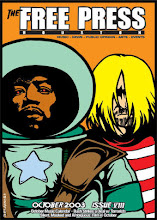Where the Wild Things Are

Spike Jonze is an interesting director yet I doubt that he'll ever direct another children's themed film in his life. The verdict is still out on Wes Anderson and The Fantastic Mr. Fox, and Dr. Suess has never really been done correctly; Where the Wild Things Are is from the monumental children's book by Roald Dahl and Spike has essentially expanded a 36 page book with a handful of sentences into a feature length film. The animals of the story are animatronic and not CGI, which is a welcome relief in terms of looking at the screen.
In the long run Where the Wild Things Are is a bore, hardly worth the time or trouble to see it. Yet if your children really get into this film you may want to enroll them in a magnet school. As melancholy as Where the Wild Things Are is you are left with the feeling that you've just seen art film for 10-year olds. Like a Terrence McNalley for the pre-teen set.
Read the book and it's a few pages. The differences between the book and the movie are as follows. Max (the kid protag) takes off on an imaginary journey after being sent to bed without supper. He meets up with a bunch of monsters and they party. In the movie Max comes home and his mother is heartfelt crying to reunite. In the book Max wakes up in this room and the meal is on the desk still hot. In the book the little satyr-esque goat boy is only seen on two pages (pages 16 & 18) whereas in the movie he's a semi-major player. You could say they've reinvented Where the Wild Things Are. In the book the sentence tells us that Max is wearing a wolf suit. In the movie I didn't know if he was wearing a catsuit or a raccoon suit. Space and time are manipulated by Jonze to little effect.
Pure and simple this is a hard core art film masquerading as a studio release, and that's to be admired. The sad reality is that Where the WIld Things Are is a hard sit. In another universe this would be a perfect 30-minute short subject.










